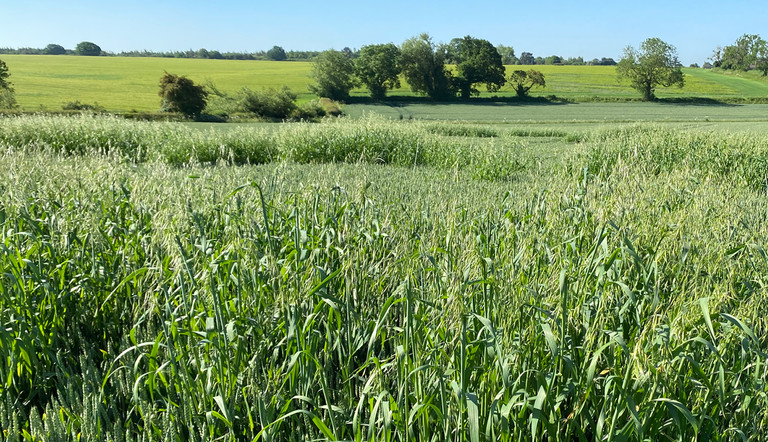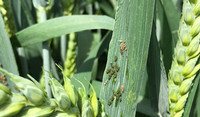
Cultural tactics and accurate spraying vital against wild oats

As with any weed, the prevention of seed production should therefore be a priority, especially as the typical array of cultural controls commonly used to tackle weeds such as black-grass (later autumn drilling, spring cropping, ploughing) often prove less effective against wild oats due to the protracted emergence of both species and their ability to germinate from depths of up to 15cm.
Cultural measures
A range of cultural and chemical control strategies must therefore be used, with hand rogueing essential in heavily infested crops. Weed mapping in June and or July (when the two species are more easily distinguishable) is also recommended as this will enable ensuing weed eradication programmes to be tailored according to which species is prevalent.
Good machinery hygiene is also required to limit the spread of wild oat seeds, with good levels of control seen where crops have been established by direct drilling or with minimal soil disturbance as this can help to reduce the germination of dormant seeds.
Herbicide best practice
When it comes to herbicide applications, sprayer operators are urged to be extra diligent when treating advanced crops as their dense canopy could prevent herbicides from reaching the underlying wild oat plants.
An appropriate herbicide should be used to spray off the worst affected areas prior to the shedding of seeds which typically commences from late June onwards: Topik (240 g/L clodinafop-propargyl and 60 g/L cloquintocet-mexyl) is approved for use in cereals, with Falcon (100g/L propaquizafop) the preferred option in broad-leaved crops. Axial Pro (55g/l pinoxaden) is also available for use in barley.
In all cases, these herbicides should be used with caution to maintain the required level of spray coverage and application accuracy: this means spraying slowly at a sensible boom height and with an appropriate water volume to optimise coverage of the target weeds.
For early spring herbicide applications (before GS31) it is feasible to reduce the water volume as the target weeds will be smaller and won’t be protected by the crop’s canopy. However, a greater water volume must be used for later applications (GS31-41) to ensure good coverage of weeds hidden below the crop. At both timings, herbicide uptake will be aided if applied during good growing conditions, with a maximum forward operating speed of 12kph and a boom height of 50cm recommended. Nozzle choice will also have a significant effect on spray coverage.
|
Spray timing |
Before GS31 |
GS31-41 |
|
Water volume |
100 L/ha |
200 L/ha |
|
Maximum speed |
12 kph |
12 kph |
|
Nozzle |
3D nozzle |
3D90 nozzle |
|
Boom height |
50 cm |
50 cm |
Additional actives
The inclusion of non-cereal break crops into the rotation will also help in the battle against wild oats as this make it possible to use additional active ingredients such as propaquizafop, quizalofop, cycloxydim, clethodim and propyzamide.
More information
For a detailed guide on how to distinguish between the two species of wild oats, and how to combat them effectively, please visit our wild oat information page


